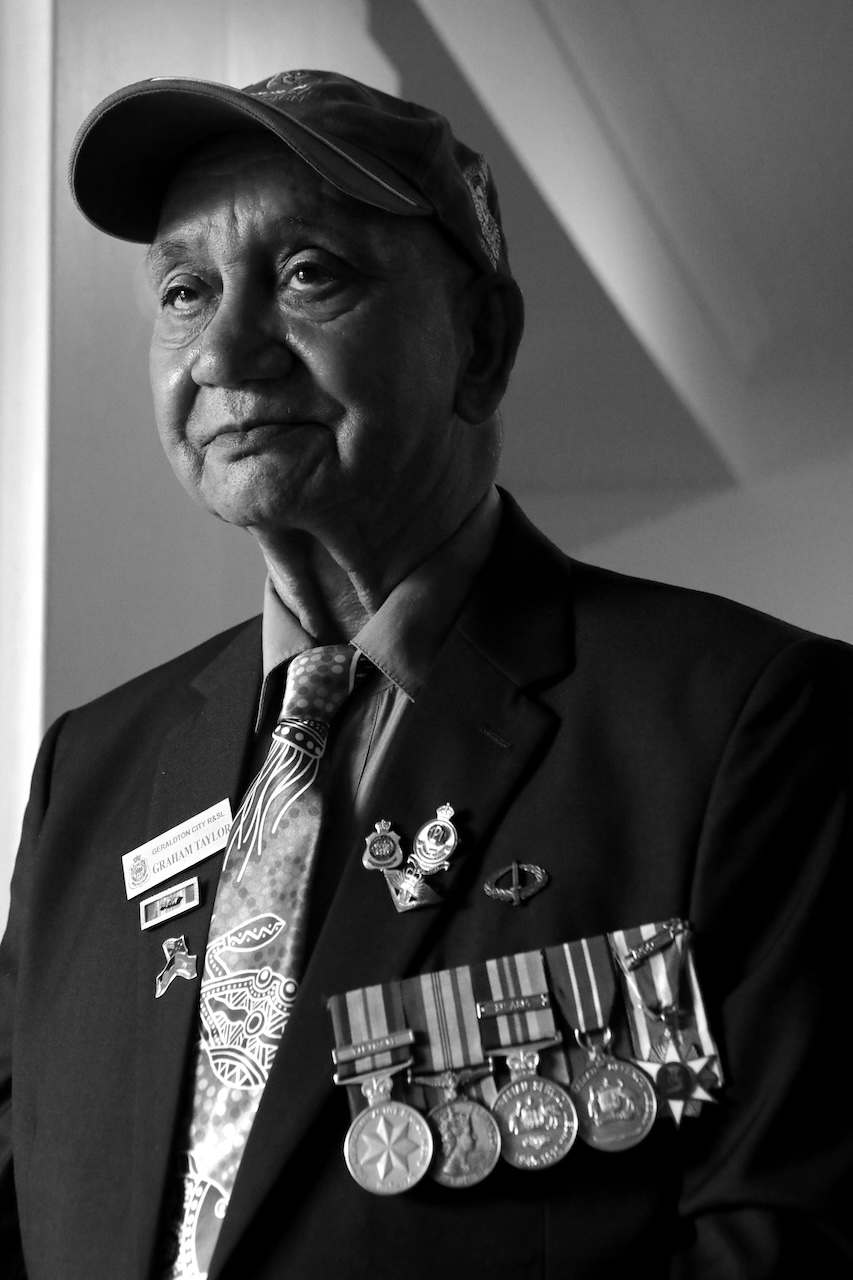Graham Taylor
Budimaya-Amangu and Yamatji Elder
Private
4th Battalion Royal Australian Regiment
Royal Australian Infantry Corps
Australian Army
Medals
Australian Active Service Medal 1945-75 with clasp Vietnam
Vietnam Medal
Australian Service Medal 1945-75 with clasp SE Asia
Australian Defence Medal
Republic of Vietnam Campaign Medal
Republic of Vietnam Cross of Gallantry with Palm Unit Citation
Infantry Combat Badge
Returned from Active Service Badge
I was born in 1952 at Three Springs, Western Australia on the 9th of May 1952. My father was a shearer, and we lived on the farm where he worked, but I knew I didn’t want to be a shearer. So, after I finished school, my cousin Gary and I decided to join the army and see the rest of Australia.
We enlisted for three years, and after recruitment training at Kapooka, I went to Sydney for infantry training. I celebrated my 18th birthday in King’s Cross with plenty of beers because now I was allowed to drink. It was when I was posted to the 4th Battalion, Royal Australian Regiment in Townsville, that we were told we were the next battalion to go to Vietnam. I hadn’t thought I’d be going to war, just seeing Australia! In May 1971, after completing jungle training, and only four days after I turned 19, we sailed for Vietnam on the HMAS Sydney. After 11 days at sea, we arrived and thought, well, here we are, we’re at war! We spent the next seven months in South Vietnam fighting the communists.
I was a Forward Scout for the first three months, but because I’d done first-aid, I was made the stretcher bearer for the platoon. I thought, oh, that’s good because now I’ll be in the middle with the platoon commander instead of out on the front line all the time. On 21st September 1971, the enemy caught us in a heavy mortar bombardment. We suffered 16 wounded, and I had the duty of patching them up. A couple had bullet holes straight through their chests, and others, shrapnel wounds. One bloke had a piece of shrapnel sticking out of his head, and when I was patching him up, I said, ‘You remind me of a unicorn.’ ‘Don’t make me laugh,’ he said. ‘It hurts!’ But I got at least 10 fixed up before another platoon came to help us out. Fortunately, no one in our platoon got killed that day. That was the Battle of Nui Le, the last major battle for us Australians in Vietnam.
We stayed over there for another three months, and then the government told us we were coming home by Christmas. My friend James Hawke, from Mogumber Mission, and I went over there when we were only 19, and when we came back, we were still only 19, just teenagers in an adults’ war. After Vietnam, I signed up for another three years and went to Malaya.
I spent six years in the army and met a lot of good blokes; we all wore the same colour uniform and became friends for life. When I left the service, things were different because of the colour of my skin and also because some people didn’t really understand what we’d done in Vietnam. I worked for the Department of Main Roads in Geraldton for ten years, operating machines; it was a good job. I got married, and my late wife Hazel and I had two sons and seven grandchildren.
In 2008 I was honoured as Elder of the Year for my efforts promoting the recognition of Indigenous servicemen and women and for mentoring youth. In 2015, I was named NAIDOC Male Elder of the Year for my contributions to our Indigenous community. I volunteer with Aboriginal organisations here, and talk with our high school students about my time in the army and having pride in being Aboriginal. I’m a member of Geraldton RSL and never miss Anzac Day. Another veteran, Ronald Cross and I helped design the Yama(t)ji War Memorial in Geraldton specifically for Indigenous veterans and those still serving their country. The design is culturally appropriate, and local people did all the work. I’ve been involved with Indigenous veterans for many years because I don’t want them to be just forgotten. War is not something to celebrate, but we have to remember those who have served and those who never came back.
